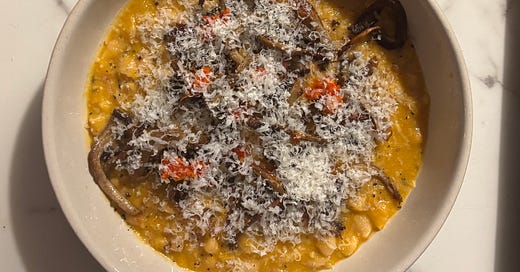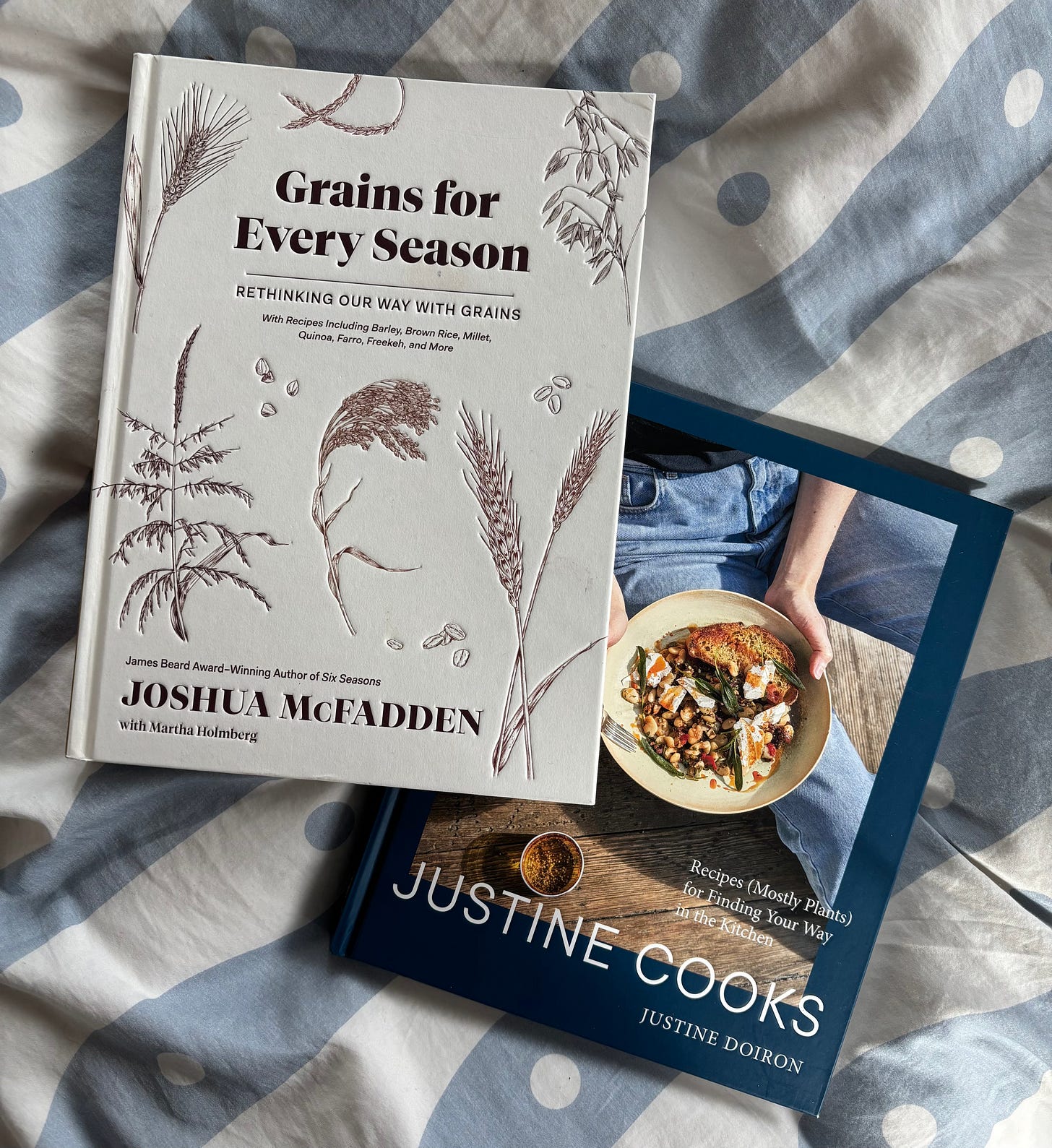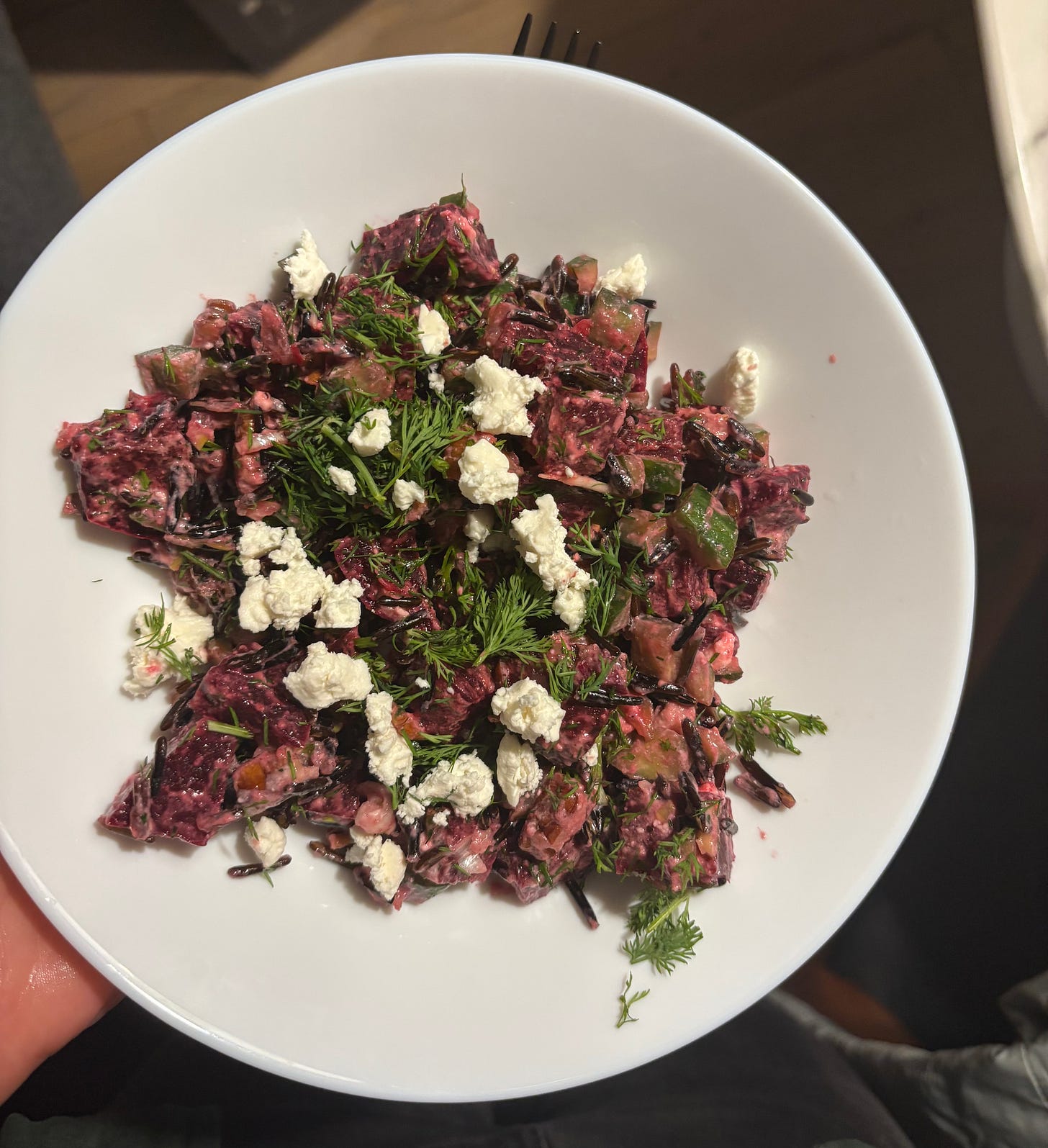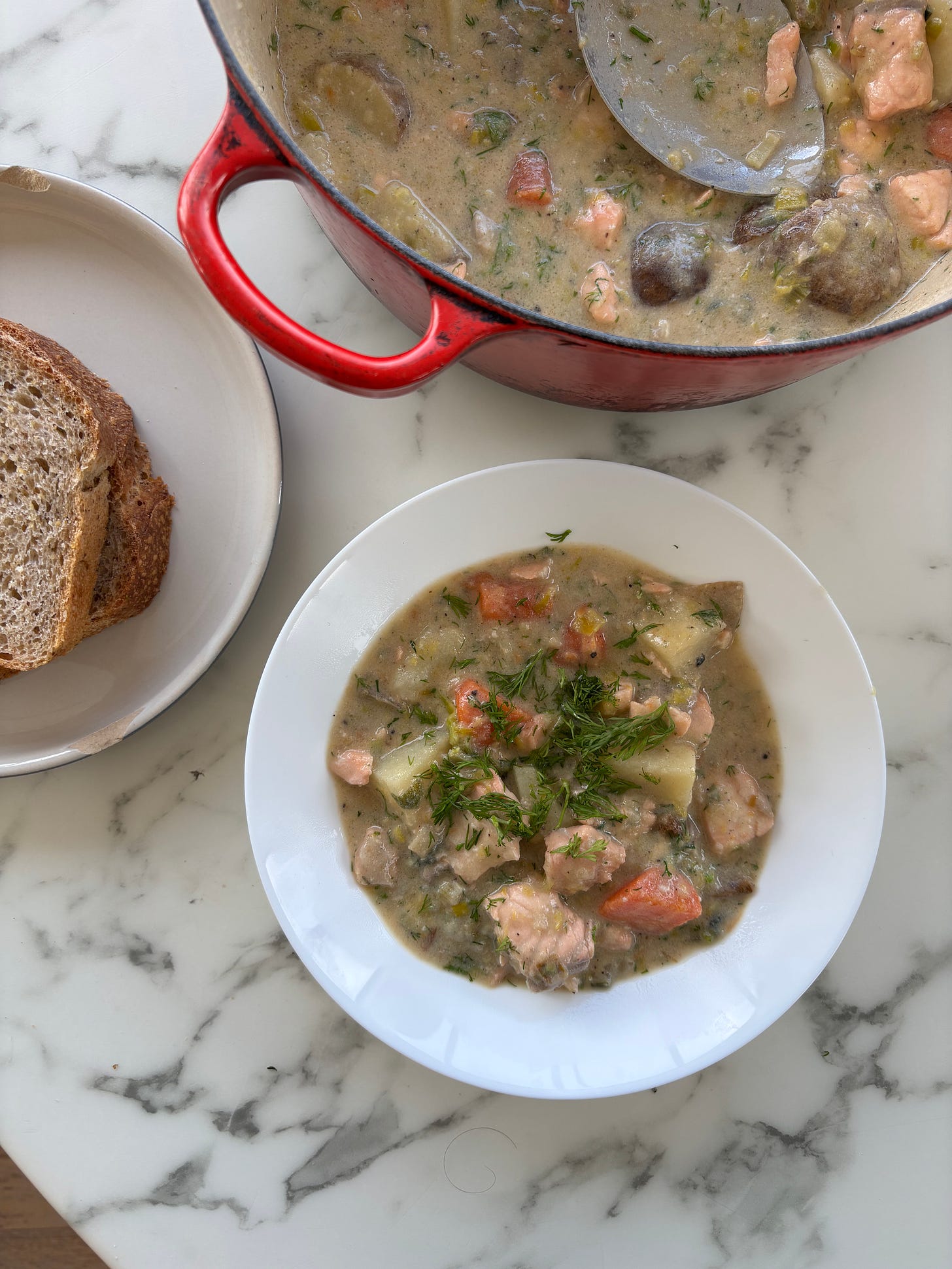Hello again from Los Angeles, where people are still struggling, misinformation about air quality abounds, and many worthy causes continue to deserve your help. Our displaced family members now have at least medium-term shelter, which is a relief. It’s back to usual-ish for this newsletter, but it’ll be years and several subsequent climate disasters before fire-affected areas reset to something like a new status quo.
Before current events intervened, I was going to write about January, a kind of culinary interregnum between the holidays on one end (rib roasts! latkes!) and Valentine’s Day/Lunar New Year (chocolate! dumplings!) on the other. January is more about what we don’t eat than what we do — a time for Whole 30 cleanses and half-hearted attempts at habit alteration. The totality of the vibe shift is disconcerting given how little changes in the material world that produces our food and cravings. The same vegetables in season; the same cold weather (okay fine, colder in Southern California) makes a stick-to-your-ribs stew sound a whole lot more natural than a salad.

I don’t make New Year’s resolutions for precisely this reason: the resetting of the Gregorian calendar feels entirely too arbitrary to inspire any lasting shifts in behavior. But I do have a soft spot for the sudden cultural emphasis on healthful eating, because it means food media starts hawking the kind of recipes I actually use to feed myself on a day-to-day basis. Red wine braised short ribs or whatever are a fun showstopper; they’re just not reflective of the quicker, more practical means of getting nutrients into my body I more typically rely on.
I also need a lot more help zhuzhing up winter produce than sexier summer fare. All you need to do to a nice tomato is cut it up and slap it on a plate with some flaky salt and good olive oil. Brassicas, kale, fennel and winter squash require more creativity, and can therefore be more rewarding to work with under the right circumstances. Besides, Southern California’s ample bounty of citrus dovetails with January’s light-bright-fresh zeitgeist in a way that makes the month’s competing prerogatives — health food, but make it wintry! — less counterintuitive here than elsewhere.
For Hanukkah this year, Hunter got me a copy of Crumbs, an encyclopedic guide to cookies across the world by local food writer Ben Mims. But with all due respect to Mims’ diligent, comprehensive work, come Christmas — the Festival of Lights arrived late this year — I was already fatigued by the prospect of yet more sugar and butter. So with Hunter’s blessing, I went back to Vroman’s in Pasadena, where I exchanged Crumbs for some very new year-appropriate alternates, plural. Cookie reference tomes are expensive, so I essentially got a twofer.
The Portland chef Joshua McFadden previously wrote Six Seasons, one of the great cookbooks of the 2010s. I haven’t made every recipe from the book, but I did spend the first 12-month period after I bought it methodically progressing through its chapters as the actual seasons around me went through a full cycle. Even if the book doesn’t map perfectly onto LA growing seasons or available produce, it cemented McFadden as an essential resource for “what do I do with this?”-type suggestions. And since the only thing trendier than protein these days is fiber, his whole grain-centric follow-up quickly caught my eye.
Justine Doiron is a recipe developer who first blew up on TikTok, a platform that has died and resurrected itself in the 24 hours leading up to this writing. Doiron started as a vaguely health-focused creator, and even if she’s pivoted away from that label since, she’s still a pescatarian who puts a heavy emphasis on veggies and legumes. Again, perfect for January, even if I’ve had a mixed track record with her work in the past.
I find Doiron’s recipes can be overcomplicated, adding fuss and extra steps for an oddly diluted flavor payoff. The dish above ended up being a case in point, though part of that was user error; I swapped butternut squash in for honeynut because it’s what I could find, and the broth was thinner and blander as a result. (Man, honeynut squash has spoiled me — just like brussels sprouts are genetically bred to taste better than they did 30 years ago, honeynuts are like regular squash but objectively superior in every way.) But I also didn’t think the mushrooms roast to a crisp contributed much compared to how long it takes, ie much longer than the recipe’s time signals say they should. The dominant flavor was roasted garlic, but if you cook a whole head for 40 minutes it’ll make anything taste good, no great genius required.
The squash grilled cheese at the top of this post was much more of a hit, in part because it’s a single, clever twist on an otherwise straightforward classic. My own approach to healthy eating is that anything I make myself from ingredients that naturally have color — the green/orange/red is where the good stuff is, right? That’s science? — is good for me. So it’s fine to add a metric ton of gouda to some squash purée, because consuming beta-carotene is more important than skipping cheese.
I’ll continue to mess around with Justine Cooks, because enough recipes are simple to the point that they’re both a low lift and a positive sign compared to ones that are fussier on the page. Pivoting to the McFadden: besides upping one’s fiber intake, Grains for Every Season promotes another resolution-adjacent activity — clearing out the pantry. I’ve had a bag of Rancho Gordo wild rice hanging around in mine since I was in my last apartment. The salad above, a kind of deconstructed everything bagel, has helped me do what a cross-town move could not and put a dent in the thing.
I also made a spiced brown-rice-and-chickpea pilaf that I forgot to photograph because, as you probably noticed, last week was a little chaotic. It was good, although it taught me brown rice that’s been sitting in a Mason jar for God knows how long takes even longer to cook than regular brown rice. (At 90 minutes, mine was still distinctly al dente.) I’ve still got more to use up, so I’ll keep going back to the McFadden well for ideas.
But my favorite entry in this year’s January cooking canon wasn’t from either of these books. It’s lohikeitto, a Finnish salmon soup I made from a recipe by Noah Tanen, an underrated FoodTok personality I’m pleased to see got snapped up by Food52. The component parts — fish, carrots, potatoes, dill — are the humble stuff of deep Scandinavian winters, but a half-cup of cream and a corn starch slurry make the whole thing feel indulgent, while a buttload of lemon juice (measurement mine) perks it up. It’s a paradox of a recipe, both virtuous and comforting, for a paradox of month.
I’ve made brownies and eaten barbecue in the last 48 hours, so January food is already on its way out, spiritually if not temporally. But if you have any staples from this genre I made up, please send them my way.








That soup looks good and will have to check out (literally) that Grains book.